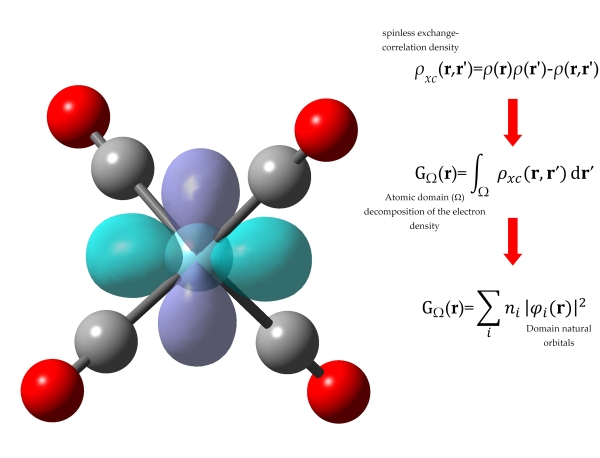|
|
Molecule of the Month August 2010 |
|
| Restoring Orbital Thinking from Real Space Description | ||

|
||
|
The orbital description is recovered from real space electron density, after combination of the Interacting Quantum Atom (IQA) and the Domain Average Fermi Hole (DAFH) approaches. The IQA+DAFH procedure is applied to a series of classical and non classical transition metal carbonyl complexes [M(CO)4]q (M = Fe, Co, Ni, Cu; q = -2, -1, 0, +1, +2). Bond indicators and energy decomposition become accessible and the traditional description in terms of Dewar-Chatt-Duncanson model is easily restored. This work was carried out by Davide Tiana (visiting PhD in the group of PD Dr. P. Macchi) in collaboration with the research group of Prof. A. Martín Pendás of the University of Oviedo. The project is supported by the Swiss National Science Foundation (Project No. 200021_125313). See http://www.chemcrys.unibe.ch for more information on the research of the Chemical Crystrallography Group. References:
|
||